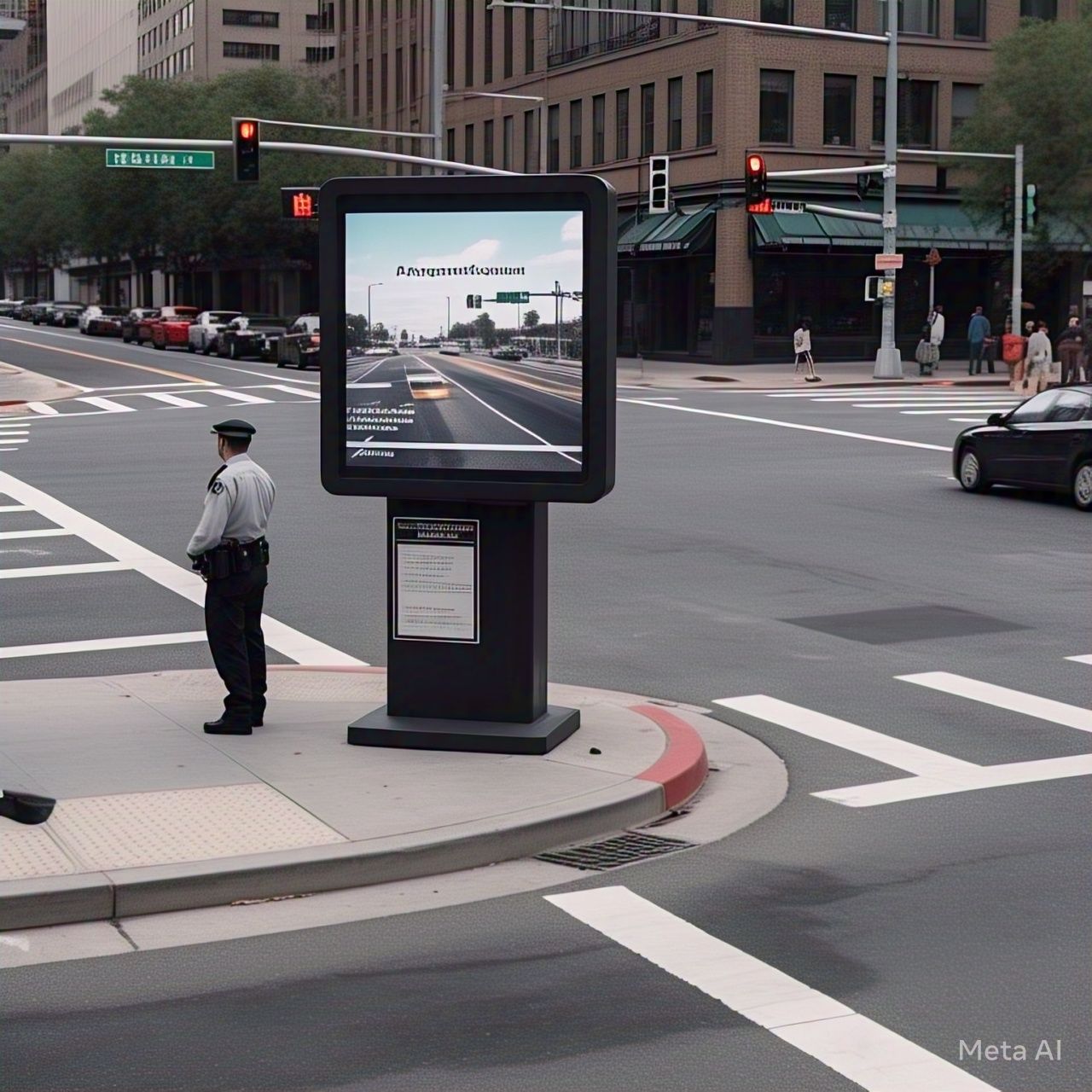Table of Contents
- Introduction
- The Importance of Traffic Signal Optimization for Emergency Vehicles
- How AI Improves Emergency Traffic Management
- AI-Powered Predictive Traffic Control
- Real-Time Data Processing for Faster Emergency Response
- Integration with Smart City Infrastructure
- Benefits of AI-Optimized Traffic Signals for Emergency Vehicles
- Challenges and Limitations
- Future Innovations in AI Traffic Control
- Conclusion
- FAQs
1. Introduction
Emergency response times are crucial in saving lives. However, traffic congestion often delays ambulances, fire trucks, and police vehicles. AI-driven traffic signal optimization is revolutionizing emergency response by allowing vehicles to navigate traffic more efficiently. This article explores how artificial intelligence enhances traffic control, reducing delays and improving public safety.
2. The Importance of Traffic Signal Optimization for Emergency Vehicles
Efficient emergency response depends on the ability to move through traffic swiftly. Traffic signal optimization is crucial because:
- Reduces delays: AI can clear intersections before emergency vehicles arrive.
- Prevents accidents: AI-controlled signals minimize risks at busy crossings.
- Improves coordination: AI integrates with GPS and communication systems for seamless navigation.
By optimizing traffic lights dynamically, AI ensures emergency vehicles reach their destinations faster.
3. How AI Improves Emergency Traffic Management
Artificial intelligence enhances traffic signal optimization through:
- Machine Learning Algorithms: AI predicts traffic patterns and adjusts signals accordingly.
- Vehicle-to-Infrastructure (V2I) Communication: Emergency vehicles communicate with traffic signals for prioritization.
- Computer Vision: AI-driven cameras monitor traffic conditions and adjust signal timings dynamically.
These AI-driven technologies allow emergency vehicles to pass through traffic with minimal disruption.
4. AI-Powered Predictive Traffic Control
Traditional traffic signals operate on fixed timing schedules, often failing to accommodate real-time road conditions. AI-powered systems use predictive analytics to:
- Analyze historical traffic data: AI identifies congestion trends.
- Detect emergency vehicle routes: AI prioritizes green lights along critical paths.
- Predict congestion hotspots: AI prevents bottlenecks before they occur.
This predictive approach minimizes disruptions and ensures smoother emergency response.
5. Real-Time Data Processing for Faster Emergency Response
AI processes real-time data from multiple sources, including:
- GPS Tracking: Locates emergency vehicles and adjusts signals accordingly.
- Traffic Sensors: Monitors vehicle density to optimize traffic flow.
- Weather and Road Conditions: AI factors in environmental elements to adjust traffic signals dynamically.
Table: Comparison of Traditional vs. AI-Optimized Traffic Signals
| Feature | Traditional Traffic Signals | AI-Optimized Traffic Signals |
|---|---|---|
| Control Mechanism | Fixed Timings | Dynamic, real-time adjustments |
| Emergency Vehicle Detection | Limited manual intervention | Automated vehicle detection and prioritization |
| Traffic Data Usage | Basic historical data | Advanced predictive analytics |
| Response Speed | Delayed manual overrides | Instant signal adaptation |
| Integration with Smart Infrastructure | Minimal | Full connectivity with IoT and GPS systems |
Real-time AI analysis ensures emergency vehicles experience minimal delay at intersections.
6. Integration with Smart City Infrastructure
AI-powered traffic management systems are a key component of smart cities. They integrate with:
- IoT Sensors: Roadside units detect traffic flow and adjust signals.
- Cloud-Based Traffic Control Centers: AI analyzes data and implements signal changes.
- AI-Driven Surveillance Cameras: Monitors road conditions to identify hazards and optimize response times.
By leveraging smart city infrastructure, AI-powered traffic signals improve emergency response efficiency.
7. Benefits of AI-Optimized Traffic Signals for Emergency Vehicles
Implementing AI-driven traffic systems offers numerous benefits:
- Faster Emergency Response Times: AI ensures green lights ahead of emergency vehicles.
- Reduced Traffic Congestion: Dynamic signal adjustments prevent gridlocks.
- Enhanced Road Safety: Minimizes the risk of collisions at intersections.
- Better Coordination with Public Transport: AI synchronizes emergency routes with transit systems.
- Environmental Benefits: Reduced idling lowers carbon emissions.
These advantages make AI a game-changer in urban emergency traffic management.
8. Challenges and Limitations
Despite its benefits, AI-driven traffic signal optimization faces challenges:
- High Implementation Costs: Upgrading traffic infrastructure requires significant investment.
- Data Privacy Concerns: AI relies on GPS and surveillance, raising ethical issues.
- Cybersecurity Risks: Hacking threats could disrupt AI-controlled traffic systems.
- Reliance on Data Accuracy: Poor data input may lead to incorrect signal adjustments.
- Integration Issues: Existing traffic infrastructure may not be compatible with AI upgrades.
Overcoming these challenges is essential for effective AI adoption in traffic management.
9. Future Innovations in AI Traffic Control
The future of AI-driven traffic optimization includes:
- 5G Connectivity: Faster data transmission improves real-time AI responses.
- Autonomous Emergency Vehicles: AI-driven ambulances and fire trucks for seamless navigation.
- AI-Powered Drone Surveillance: Real-time monitoring of emergency routes for optimization.
- Advanced AI Learning Models: Self-improving algorithms for smarter decision-making.
Continued advancements will further enhance emergency response capabilities in urban areas.
10. Conclusion
AI-powered traffic signal optimization is transforming emergency response efficiency. By leveraging predictive analytics, real-time data, and smart infrastructure, AI ensures faster, safer, and more coordinated emergency vehicle navigation. While challenges exist, ongoing technological advancements will make AI-driven traffic systems a critical component of future smart cities.
11. FAQs
1. How does AI optimize traffic signals for emergency vehicles?
AI uses real-time GPS tracking, traffic sensors, and predictive analytics to prioritize emergency vehicles and adjust signals dynamically.
2. Can AI completely eliminate traffic delays for emergency responders?
While AI significantly reduces delays, complete elimination depends on infrastructure upgrades and seamless integration with traffic systems.
3. What are the biggest challenges in AI-driven traffic management for emergencies?
Challenges include high implementation costs, data privacy concerns, cybersecurity risks, and the need for accurate real-time data.
4. How does AI interact with existing smart city infrastructure?
AI integrates with IoT sensors, cloud-based control centers, and surveillance systems to optimize traffic flow dynamically.
5. What is the future of AI in emergency traffic management?
Future advancements include 5G connectivity, autonomous emergency vehicles, AI-driven drone surveillance, and self-improving AI models.
Citations:
- National Highway Traffic Safety Administration (NHTSA) – AI in Emergency Response
- World Economic Forum – AI and Smart Traffic Systems
- MIT AI Lab – Predictive Analytics in Traffic Management
- Smart Cities Council – AI in Urban Mobility
- International Transport Forum – AI-Powered Traffic Signal Optimization





